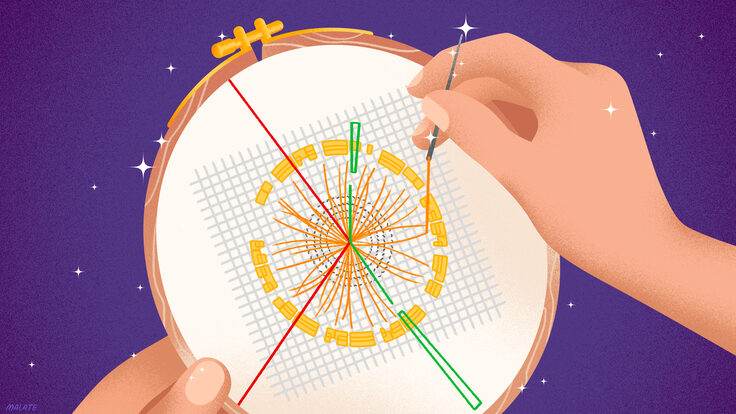The contraption is just a dirt-dampness detector. Honest.
Marek Zreda and Darin Desilets of the University of Arizona approached airport security with a suitcase full of tubing, cables, electronic devices, and wires. The guard opened it. Lights started blinking.
Zreda explained that he was a scientist who studies cosmic rays and that this was a portable neutron detector. The guard escorted Zreda and his colleague to an office.
"There were a lot of questions and some trick questions also," says Zreda, who is an associate professor of hydrology; Desilets is a doctoral student. "They asked if we knew this long-time cosmic-ray scientist, but it was a fake name."
Zreda didn't fall for it, and after about half an hour was allowed to check the $15,000 detector as luggage on a 2003 flight from Hawaii to Arizona.
While physicists aim cosmic-ray detectors at the sky to look at particles raining down from space, Zreda and Desilets aim their neutron detector at the ground to see what happens when cosmic rays penetrate the Earth. The resulting data show how moist the soil is, an important factor in forecasting weather and crop yields, modeling global warming trends, and calibrating satellites.
"I was amazed," Zreda says. "We look at something that comes from outer space—the cosmic rays that we use come from galactic sources—and they tell us about our Earth. It is a little bit twisted."
And more than a little complicated, when it comes to flying.
Many a scientist has had to explain suspicious-looking equipment to airport security. Physicists with the CMS experiment at the Large Hadron Collider, for instance, had to make multiple trips to ferry detector components from the United States to the European laboratory CERN.
But the benefits are worth the hassle, says Zreda, who doesn't fault the security people for doing their job. "The way the detector looks," he says, "they had to question us."
For more on Zreda's work, see "Cosmic Weather Gauges" on page 24.
Tona Kunz
Click here to download the pdf version of this article.






